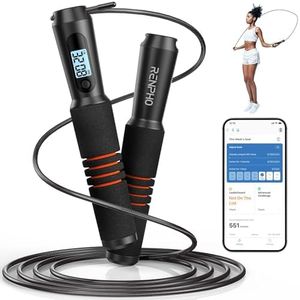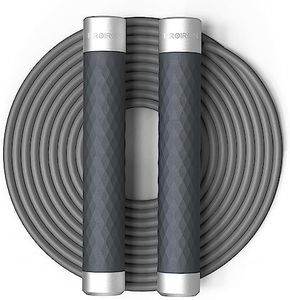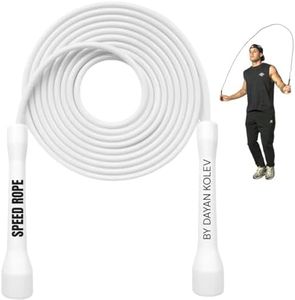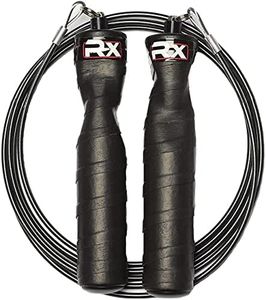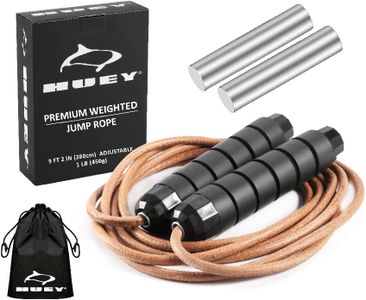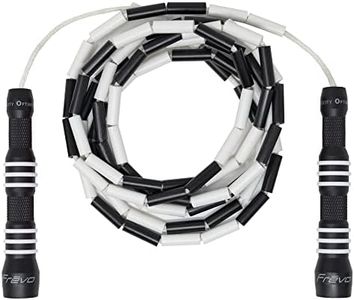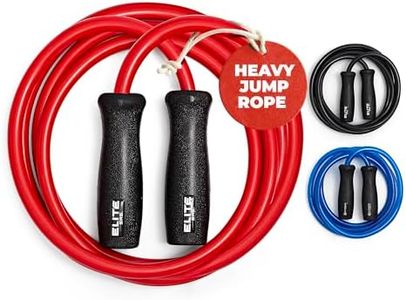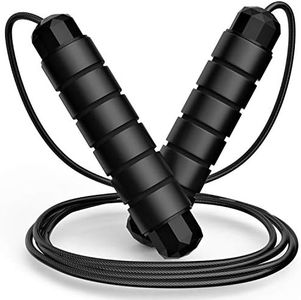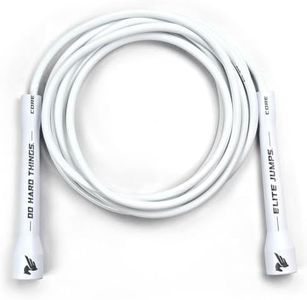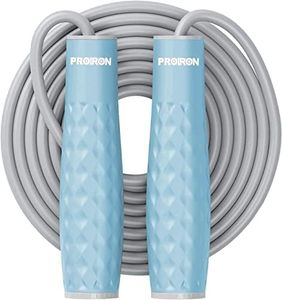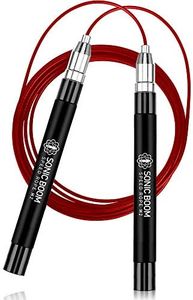We Use CookiesWe use cookies to enhance the security, performance,
functionality and for analytical and promotional activities. By continuing to browse this site you
are agreeing to our privacy policy
10 Best Crossfit Jump Ropes
From leading brands and best sellers available on the web.Buying Guide for the Best Crossfit Jump Ropes
Choosing the right jump rope for CrossFit can make a big difference in your performance, comfort, and progress. The right rope will help you master skills like double-unders, improve your coordination, and reduce the likelihood of injury or excess fatigue. When shopping for a jump rope, focus on your current skill level, the exercises you want to do, and your personal comfort. Some features will suit beginners, while others are best for advanced athletes. Understanding key specifications will help you make a confident, informed decision.Rope MaterialThe rope material refers to what the cable itself is made of, and it affects speed, durability, and comfort. Common options include coated steel cables, uncoated steel cables, and PVC or other plastics. Coated steel tends to offer a balance of speed and safety and is long-lasting, making it suitable for most CrossFitters. PVC ropes are softer on the shins and better for beginners, while uncoated steel is extremely fast, ideal for advanced users but can be punishing on mistakes. Think about whether you prioritize speed for advanced skills or a more forgiving rope for learning basics.
Rope ThicknessRope thickness impacts the rope's weight, feedback, and speed. Thinner cables (around 1.5mm to 2.5mm) are lighter and faster, perfect for double-unders and competitors focused on speed, but they provide less feedback and are harder to feel spinning. Thicker ropes (over 3mm) are heavier, slower, and easier to feel, which helps beginners develop rhythm and skill. If you are just starting or working on technique, a slightly thicker rope may help, but if you’re advanced and aiming for maximum speed, go for a thinner cable.
Handle Type and GripThe handles are what you hold, and their shape, thickness, and grip surface affect comfort and control. Some handles are straight and narrow, others are contoured for the fingers or have knurling or padding for grip. Shorter, lighter handles are nimble but can be harder to control for long periods, while thicker or textured handles help maintain a secure grip even with sweaty hands. Pick a handle that feels comfortable and secure when held lightly. If you have smaller hands, a narrow handle may work better, while people with larger hands or who sweat a lot may benefit from a thicker, textured grip.
Rope Length AdjustabilityAdjustability refers to whether and how easily the rope length can be changed. Some ropes have fixed lengths, while others can be adjusted with screws, clips, or sliding mechanisms. Adjustable ropes are great for groups or growing athletes, and they let you dial in just the right length for your height and jumping style. If you know your ideal length and are the only user, a fixed rope can be fine, but for most people, adjustability means fewer headaches and more versatility.
Bearing SystemThe bearing system is what allows the rope to spin smoothly in the handle. Ball bearings or bushings inside the handles reduce friction and help the rope move quickly and efficiently. Smooth bearings make it easier to do fast, repeated jumps such as double-unders and minimize unnecessary twisting and tangling. If you plan to do high-speed jumping or advanced tricks, a rope with a good bearing system will make the process easier and more enjoyable. Beginners can start with simpler systems but will benefit as their skills progress.
